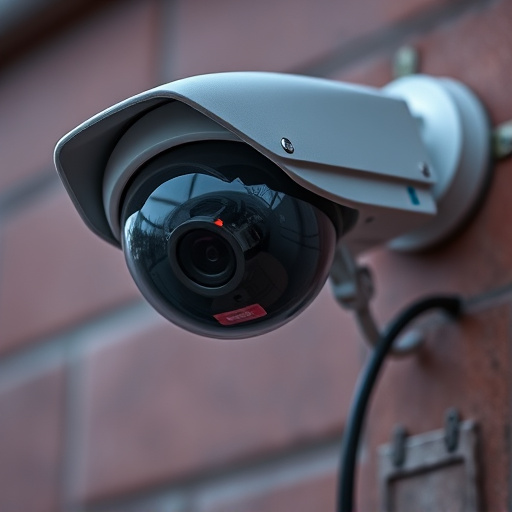Optimal fake security camera height placement varies based on field of view needs, environmental factors, and legal requirements. In open spaces, higher positions offer broader coverage, while urban areas may need average heights to maintain realism without attracting attention. Integrate cameras naturally with surroundings for authenticity. Placement guides include desired view, obstructions from trees/buildings, local privacy laws, and specific use cases like residential (2-3 feet) or commercial (up to 10 feet). Weatherproofing is crucial for outdoor cameras, while indoor models prioritize image quality and discreet design.
“Maximize the effectiveness of your security with the right dummy camera placement. This guide delves into the art of selecting the optimal height, shape, and technological features for your fake security dome camera. From residential to commercial settings, we explore key factors like environment, field of view, motion detection sensitivity, and weatherproofing. Learn how these choices can prevent false alarms and ensure robust protection, without breaking the bank.”
- Determining Suitable Dummy Camera Height for Different Environments
- – Factors influencing camera placement height
- – Recommendations based on common scenarios (e.g., residential, commercial, outdoor vs indoor)
Determining Suitable Dummy Camera Height for Different Environments
Choosing the right height for a dummy security camera is crucial, as it can significantly impact its effectiveness and overall look in various environments. The ideal fake camera height placement depends on several factors, including the area’s layout, natural features, and desired level of security. For instance, in open fields or spacious offices with few obstructions, a higher camera position can provide better coverage and deter potential intruders due to the increased line of sight. On the other hand, in urban settings with tall buildings or dense foliage, strategically placing cameras at average heights may be more suitable, as it offers a realistic surveillance presence without appearing overly obtrusive.
When considering fake security camera height placement, it’s essential to blend them naturally into the surroundings. This means avoiding extremely high or low positions that might draw unnecessary attention. For outdoor areas, aligning the cameras with nearby structures, trees, or architectural elements can create a convincing visual and ensure optimal field of view. Indoor spaces may require different approaches, such as mounting cameras on walls near windows or doors to mimic real security equipment while maintaining a subtle aesthetic.
– Factors influencing camera placement height
The optimal placement height for a dummy security dome camera, or any security camera for that matter, is influenced by several key factors. One primary consideration is the desired field of view—the area the camera is designed to monitor. A higher camera placement allows for a broader panoramic view, capturing more ground and reducing blind spots compared to lower-mounted cameras. This is particularly important in open spaces like parking lots or large warehouses where criminals might attempt to hide.
Another crucial factor is the environment and surrounding obstacles. Trees, buildings, signs, and other structures can obstruct the line of sight, affecting both the camera’s field of view and image quality. Therefore, camera placement should account for these obstructions, ensuring maximum visibility while avoiding areas that could distort or block the camera’s lens. Additionally, local regulations and zoning laws may dictate minimum elevation requirements for security cameras in certain public spaces to maintain privacy and comply with legal standards.
– Recommendations based on common scenarios (e.g., residential, commercial, outdoor vs indoor)
When selecting a dummy security dome camera, considerations heavily depend on the intended use case and environment. For residential settings, a relatively low fake security camera height placement of 2-3 feet (approximately 60-90 cm) from the ground is suitable, offering a clear view of entry points without appearing overly intrusive. Commercial applications might require higher placements, up to 10 feet (around 3 metres), especially in reception areas or common spaces where deterrence and surveillance are paramount.
Outdoor versus indoor settings also dictate choices. Outdoor cameras need weatherproof designs and often more robust housing to withstand varying temperatures and environmental conditions. Fake security camera height placement should be strategic, ensuring comprehensive coverage without compromising natural aesthetics. In contrast, indoor cameras generally focus on clear image quality, motion detection sensitivity, and discreet design to blend seamlessly with the environment while still providing effective surveillance.
In determining the optimal fake security camera height placement, understanding your environment is key. Whether it’s a residential or commercial space, indoors or outdoors, the factors discussed in this article—such as visibility, lighting, and target area coverage—should guide your decision. By carefully considering these aspects, you can ensure that your dummy security dome camera operates effectively as a deterrent, providing peace of mind for any property owner.
